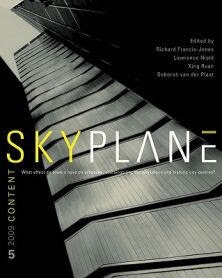The First Skyscrapers
From about 1865, American architects developed an ‘original building type’, the skyscraper. Innovations in metal-frame construction, the safety elevator, fire-proofing techniques and other technical improvements, in conjunction with rising real estate prices, led to their feasibility.
Previously, buildings were constructed of masonry bearing-walls, whose thick walls were not economical, and were limited in height. However, with these technological developments and James Bogardus’s introduction of the European iron I-section, the new building form emerged.
In Chicago, the business district was largely destroyed by fire in 1871, leading to a series of new high-rise fireproofed metal-frame buildings by architects collectively termed the Chicago School. Although containing pioneering structures, most were clad in masonry.
Home Life Insurance Building, 1885
Reliance Building, Chicago, 1894-95
A world History of Architecture, Marian Moffett, Michael Fazio & Laurence Wodehouse
The term ‘Skyscraper’
The word ‘skyscraper’ came about in the 1880s, after the first 10-20 story buildings were built in Chicago and New York. Somewhat confusing in definition, it is not to be confused with ‘high-rise’.
Skyscraper; “Colloquial term referring to a multi-storey building designed for human occupancy (usually for office use), the height of which greatly exceeds one or both of its horizontal dimensions.” (Oxford University Press)
The Rise of the Skyscraper
The skyscraper trend was quick to take off, encouraged by further developments in concrete, the use of steel reinforcement enabling large-scale structures, and glass ‘curtain’ walls, non-structural cladding or infill glass applied to the structure. The exploration into curtain wall buildings lasted much of the twentieth century, with improvements in air-conditioning and breakthroughs in glass technology. From the 1950s, the invention of float glass, made large areas of glass possible, and the repetitive grids of extruded aluminium mullions fixed to the structure, with supportive panels of glass in-between, became commonplace.
SOM's Lever House: early 1950s curtain wall
Bauhaus early steel and glass construction
The Commercial Skyscraper
Increasingly, the curtain-glass wall began to appear on commercial and institutional buildings. The desire to build bigger, taller buildings has been around since ancient times, notably in Egypt, the pyramids represented the power and wealth of the Emperor. In the early twentieth century, corporations built skyscrapers to increase their brand recognition. A prime example of this is the Chrysler Building in New York (briefly the world's tallest in 1930 at 1046 feet, 77 stories), but still one of the most recognisable skyscrapers in the world today.
Chrysler Building, New York
The Race for the Sky
Since the beginning of the twentieth century, the race for the sky has continued. The Empire State Building (1,250 feet and 102 stories) became the world’s tallest building after the Chrysler Building, and managed to withhold this record for 41 years, until the World Trade Centre came along in 1972 (1,368 feet, 110 stories). Soon after, the race become international, with Malaysia holding the record for some time with the Petronas Towers, built in 1998, followed by Taiwan’s Taipei 101, built in 2004 (1,670 feet and 101 stories). This building held the record for the tallest tower until only very recently when the Burj Khalifa (formerly the Burj Dubai) was built in 2010 in Dubai, United Arab Emirates (2,716 feet, or 828 metres, and 160 stories).
Graph showing comparison of skyscraper height
http://www.dubai-architecture.info/BurjDubaiHeight.png
The Image of the Skyscraper
“More than a century of literature art film and new media representations have built an image of the skyscraper inside the space of our collective imagination.” (Scott Johnson, Building Tall: Image of the Skyscraper)
Certainly Scott Johnson’s idea of the present image of the skyscraper (associated with wealth, power and ambition) and his argument that the towering presence of the skyscraper has come to embody society’s unexamined notions and secret desires, are critical ideas to explore.
“Paradoxically as the skyscraper building type changed to address shifting socio-economic conditions its perception by mainstream culture has become simpler and more consumable.” (Scott Johnson, Building Tall: Image of the Skyscraper)
In addition, the book "Skyplane" explores the impact of high-rise towers on city life and culture. The book contains a number of essays from architects and theorists, examining the global phenomenon of the skyscraper.
Further investigation into the socio-economic influences on skyscrapers and society’s visions of urban environments, might lead us to understand why the skyscraper is embraced for some building typologies, but not others. In addition, the perceptions by mainstream culture of skyscrapers and the notion of consumerism and ‘building branding’, are further topics for discussion.
Noticeably the skyscraper is a subject that provokes opinion from almost everybody, and opens architecture up to mainstream society. It has become a tool for manipulation of urban form, exploration of new materials, and a solution to expensive real estate and overpopulation. It contains references to culture and consumerism, and provides us with a brilliant, topical subject for our final year research studio, and an opportunity to partake in the conversation and debate.









No comments:
Post a Comment